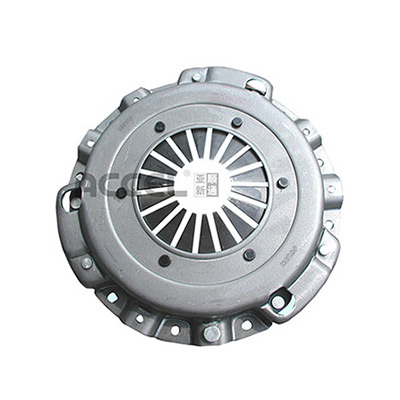- Arabic
- French
- Russian
- Spanish
- Portuguese
- Turkish
- Armenian
- English
- Albanian
- Amharic
- Azerbaijani
- Basque
- Belarusian
- Bengali
- Bosnian
- Bulgarian
- Catalan
- Cebuano
- Corsican
- Croatian
- Czech
- Danish
- Dutch
- Afrikaans
- Esperanto
- Estonian
- Finnish
- Frisian
- Galician
- Georgian
- German
- Greek
- Gujarati
- Haitian Creole
- hausa
- hawaiian
- Hebrew
- Hindi
- Miao
- Hungarian
- Icelandic
- igbo
- Indonesian
- irish
- Italian
- Japanese
- Javanese
- Kannada
- kazakh
- Khmer
- Rwandese
- Korean
- Kurdish
- Kyrgyz
- Lao
- Latin
- Latvian
- Lithuanian
- Luxembourgish
- Macedonian
- Malgashi
- Malay
- Malayalam
- Maltese
- Maori
- Marathi
- Mongolian
- Myanmar
- Nepali
- Norwegian
- Norwegian
- Occitan
- Pashto
- Persian
- Polish
- Punjabi
- Romanian
- Samoan
- Scottish Gaelic
- Serbian
- Sesotho
- Shona
- Sindhi
- Sinhala
- Slovak
- Slovenian
- Somali
- Sundanese
- Swahili
- Swedish
- Tagalog
- Tajik
- Tamil
- Tatar
- Telugu
- Thai
- Turkmen
- Ukrainian
- Urdu
- Uighur
- Uzbek
- Vietnamese
- Welsh
- Bantu
- Yiddish
- Yoruba
- Zulu
Каст . 18, 2024 15:42 Back to list
timing belt service
Timing Belt Service Essential Maintenance for Your Vehicle
The timing belt is a crucial component in your vehicle’s engine, responsible for synchronizing the crankshaft and camshaft. This synchronization ensures that the engine’s valves open and close at the correct times during each cylinder's intake and exhaust strokes. A well-functioning timing belt is vital for optimal engine performance, and regular maintenance is essential to avoid costly repairs.
One of the most important aspects of timing belt maintenance is knowing when to replace it. Generally, manufacturers recommend replacing the timing belt every 60,000 to 100,000 miles, but this interval can vary depending on the make and model of your vehicle. Always refer to your owner's manual for specific recommendations. Driving habits, engine conditions, and the quality of the timing belt itself can also influence its lifespan.
Neglecting to replace a worn or damaged timing belt can lead to severe engine problems. If the timing belt fails while driving, it can cause the engine to misfire, lose power, or, in worst-case scenarios, lead to catastrophic engine damage. In interference engines, where the space between the valves and pistons is tight, a broken timing belt can result in the pistons colliding with the valves, leading to bent valves, damaged pistons, and expensive repairs. This is why proactive timing belt service is essential.
timing belt service

The timing belt service also often includes replacing other components, such as the water pump, tensioner, and idler pulleys. The water pump is frequently driven by the timing belt, and if it fails shortly after a timing belt replacement, it may require a second labor-intensive job to replace it, effectively doubling costs. By replacing these parts together, you save both time and money in the long run.
When it comes to the timing belt replacement process, it's typically a complex job best handled by a qualified mechanic. The service usually begins with the engine being cooled down, followed by the removal of various engine components—like the engine covers and accessories—to access the timing belt. The mechanic will then carefully remove the old belt and check for any additional wear or damage to the associated components. After the new timing belt and other parts are installed, the engine is reassembled, and the mechanic will ensure everything runs smoothly.
Routine maintenance is also key to prolonging the life of your timing belt. This includes regular inspections for signs of wear or damage, such as cracks, fraying, or looseness. Keeping up with your vehicle's overall maintenance schedule, including oil changes and coolant flushes, can also help maintain the health of your engine and its components, including the timing belt.
In conclusion, timing belt service is a vital aspect of vehicle maintenance. By understanding its importance and adhering to replacement schedules, you can ensure your engine operates smoothly and avoid the pitfalls of timing belt failure. Taking proactive steps in timing belt maintenance will keep your vehicle running reliably for years to come.
-
Korean Auto Parts Timing Belt 24312-37500 For Hyundai/Kia
NewsMar.07,2025
-
7PK2300 90916-T2024 RIBBED BELT POLY V BELT PK BELT
NewsMar.07,2025
-
Chinese Auto Belt Factory 310-2M-22 For BMW/Mercedes-Benz
NewsMar.07,2025
-
Chinese Auto Belt Factory 310-2M-22 For BMW/Mercedes-Benz
NewsMar.07,2025
-
90916-02660 PK Belt 6PK1680 For Toyota
NewsMar.07,2025
-
drive belt serpentine belt
NewsMar.07,2025

